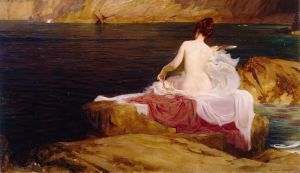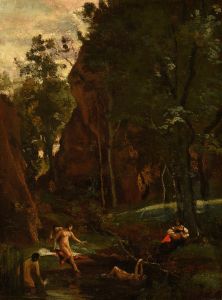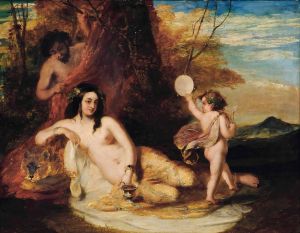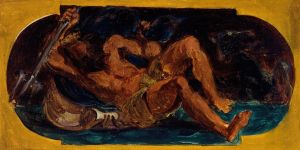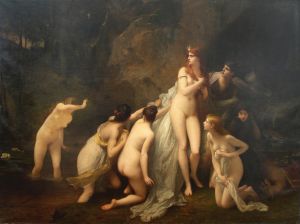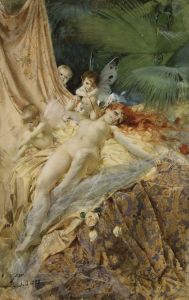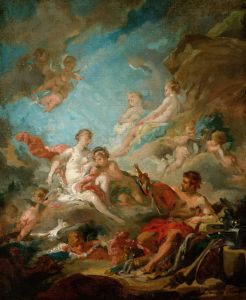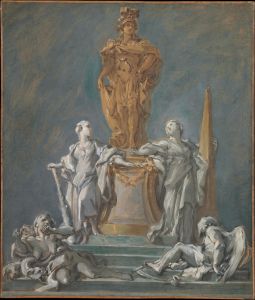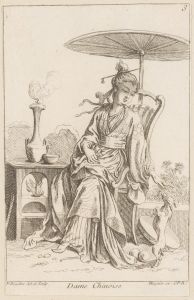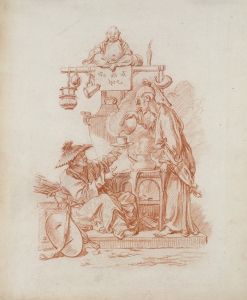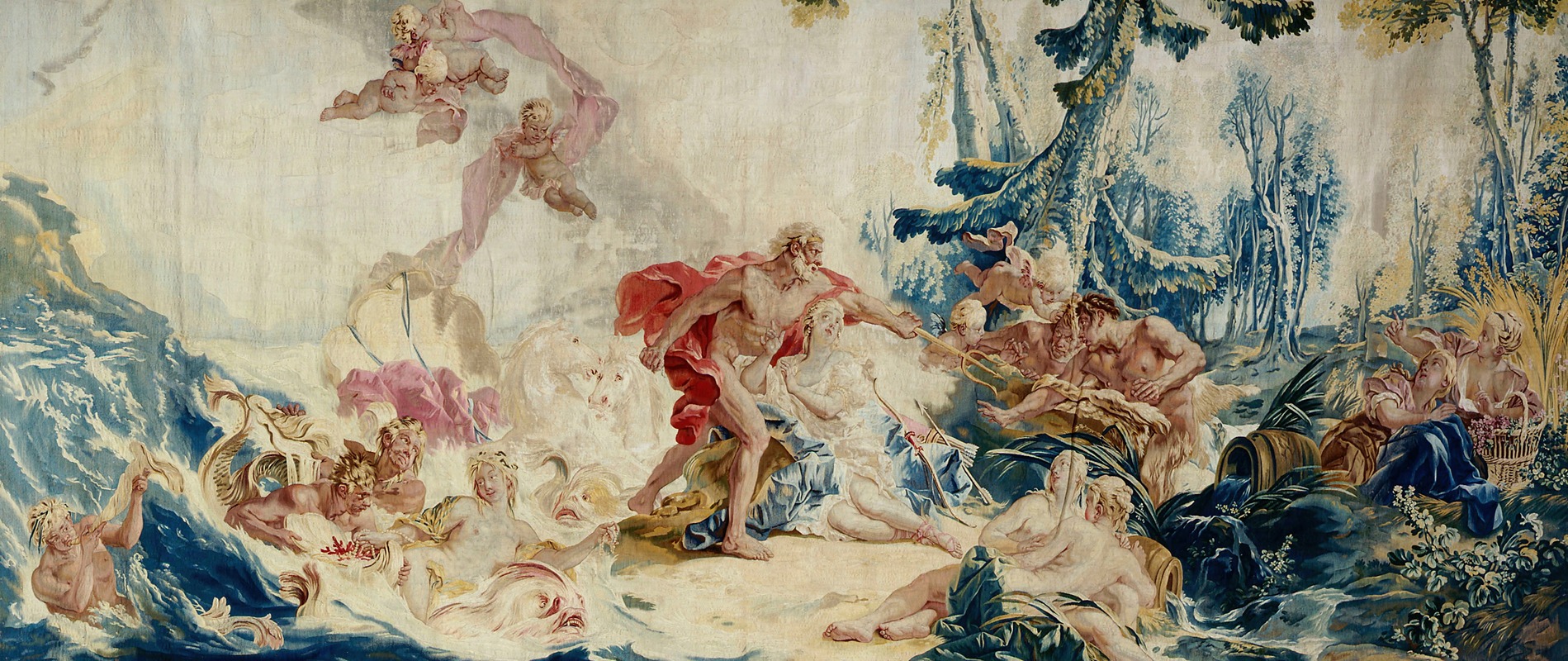
Neptune et Amymoné
A hand-painted replica of François Boucher’s masterpiece Neptune et Amymoné, meticulously crafted by professional artists to capture the true essence of the original. Each piece is created with museum-quality canvas and rare mineral pigments, carefully painted by experienced artists with delicate brushstrokes and rich, layered colors to perfectly recreate the texture of the original artwork. Unlike machine-printed reproductions, this hand-painted version brings the painting to life, infused with the artist’s emotions and skill in every stroke. Whether for personal collection or home decoration, it instantly elevates the artistic atmosphere of any space.
François Boucher's Neptune et Amymoné is a Rococo painting created in 1757 by the renowned French artist François Boucher. Known for his mastery in depicting mythological and pastoral themes, Boucher was one of the most celebrated painters of the 18th century, serving as the First Painter to King Louis XV and a central figure in the French Rococo movement.
The painting illustrates a scene from Greek mythology involving Neptune, the god of the sea, and Amymone, one of the fifty daughters of Danaus, the king of Libya. According to the myth, Amymone was sent by her father to find water during a time of drought. While searching, she encountered a satyr who attempted to assault her. Neptune intervened, saving her, and in gratitude, Amymone became his lover. Neptune then struck the ground with his trident, creating a spring to provide water. This mythological tale is often interpreted as a symbolic representation of the life-giving power of water and the union of divine and mortal realms.
In Neptune et Amymoné, Boucher captures the sensuality and theatricality characteristic of Rococo art. The composition features Neptune and Amymone in a dynamic and intimate pose, surrounded by flowing drapery, seashells, and other maritime elements. The soft, pastel color palette and the delicate rendering of textures, such as skin and fabric, are hallmarks of Boucher's style. The painting exemplifies the Rococo aesthetic, with its emphasis on elegance, playfulness, and the celebration of beauty.
The work was created during a period when mythological subjects were highly popular among the French aristocracy, who commissioned such paintings to adorn their private salons and châteaux. Boucher's ability to blend classical themes with the frivolity and charm of Rococo made him a favorite among patrons, including Madame de Pompadour, the influential mistress of Louis XV and a significant supporter of the arts.
Today, Neptune et Amymoné is housed in the Louvre Museum in Paris, where it is part of the museum's extensive collection of 18th-century French paintings. The artwork continues to be admired for its technical brilliance and its embodiment of the Rococo spirit, making it a significant example of Boucher's contribution to the art of his time.





